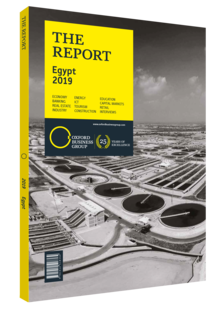Egypt looks to cooperate with other African markets as the continent's economies continue to grow
Since 2000, half of the world’s fastest growing economies have been in Africa, and 21 out of 30 of the world’s fastest-growing cities are now in Africa. Due to an expanding middle class, Africa’s potential has been increasingly attractive for both African and international investors alike, with GDP growth on the continent expected to average 4% in 2019. Egypt has recently oriented its focus towards Africa, and although Egypt’s diplomatic and economic relations with African countries have not always been smooth – as is notable in the negotiations over the Grand Ethiopian Renaissance Dam, in which Egypt considers to be a threat to its security in the context of growing demand for water – Egypt is undertaking efforts to increase its investments across Africa and to boost trade with its African partners.
Gateway to Africa
Egypt’s membership to the Agadir Free Trade Agreement with Morocco, Tunisia and Jordan, the East African Community and the Common Market for Eastern and Southern Africa has underpinned its economic ties to Africa. Also, in February 2019, one year after the African Continental Free Trade Area (AfCFTA) agreement was signed in March 2018, Egypt began its chairmanship of the African Union for a one-year term. The AfCFTA agreement is expected to come into force in the first quarter of 2019 following ratification by 22 of the 52 signatories, with the aim of establishing a single market within Africa. It is from this position that Egypt is working to secure its position as a gateway for Africa by also focusing on bilateral efforts on specific issues. These efforts coincide with initiatives to attract investment in manufacturing, logistics and ICT, and to expand Egypt’s exports to the continent. Historically, African economic and trade infrastructure has been designed around the export of raw materials to global manufacturing centres and the import of finished products from those same centres. Intra-African continental trade has therefore lagged behind the internal trade of other regions, and the costs of Africa-to-Africa flights and shipping, as well as the relative difficulty of navigating logistics and bureaucracy, continue to reflect this historical reality. “In 2016, intra-African exports made up 18% of total exports, compared to 59% and 69% for intra-Asia and intra-Europe exports, respectively,” according to a March 2018 article from the Brookings Institution.
Trade Ties
Egypt, however, also has close trade ties with the Nile Basin countries of Rwanda, Democratic Republic of the Congo, Uganda, Tanzania, Ethiopia and Burundi, and has recorded a 17.5% increase in trade with these countries during the first 10 months of 2018, according to data from the Central Agency for Public Mobilisation and Statistics. Over the same period, Egypt’s exports to this group grew by 8.9%, reaching $876m. While trade ties are expanding, efforts are also under way to tackle key issues for economic development, like energy. In one example, Egypt took a step towards becoming an energy hub with the completion of a connection between the Egyptian and Sudanese electricity grids through the Toshka substation in early 2019, allowing Egypt to supply a maximum of 40 MW to its neighbour.
One of the initial challenges to boosting intra-African trade will be to expand and strengthen export financing and monetary infrastructure between countries in order to mitigate risk and encourage companies to take advantage of the opportunities available. In addition to the financial and technical framework, development of the physical logistics infrastructure and internal connections will likewise be an early hurdle to boosting long-term trade on the continent. Nevertheless, through the creation of a single market and development of shared policy in certain areas, its members aim to strengthen the cross-border logistics infrastructure, boost economic integration and reduce bureaucratic friction, with a view to capitalising on Africa’s economic growth.
You have reached the limit of premium articles you can view for free.
Choose from the options below to purchase print or digital editions of our Reports. You can also purchase a website subscription giving you unlimited access to all of our Reports online for 12 months.
If you have already purchased this Report or have a website subscription, please login to continue.

